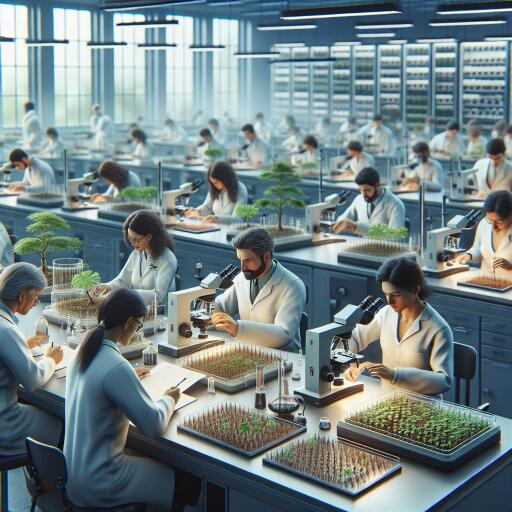
Tissue Culture Lab to Revive Endangered Delhi Trees Takes Root
In an innovative leap towards conservation, the Forest and Wildlife Department of Delhi has initiated the establishment of a cutting-edge tissue culture laboratory. Nestled within the lush expanse of the Asola Bhatti Wildlife Sanctuary, this laboratory is poised to become a beacon of hope for the propagation of Delhi’s threatened native tree species. The project arises from a pressing need to cultivate saplings of native species, which are currently struggling against the brink of extinction or are available in limited quantities.
The laboratory’s primary aim is to bolster the growth of endangered species indigenous to the Delhi region, especially those native to the Aravalli or ridge areas. These species face significant regeneration hurdles, largely attributed to the aggressive spread of the invasive Vilayati Kikar. This intrusive species creates a hostile environment, stifling the natural propagation of native saplings.
The project has identified approximately 10 species in dire need of conservation efforts, including the Hingot, Khair, Bistendu, Siris, Palash, Chamrod, Doodhi, Dhau, Desi Babool, and Kulu. These species represent the rich biodiversity of the region and are integral to the ecological balance of Delhi’s green spaces.
The initiative to set up this laboratory involves meticulous planning and coordination. A tender process is currently underway to select the ideal candidates for constructing the laboratory. The Forest Department plans to collaborate closely with eminent botanists and scientists from prestigious institutions, such as the Indian Council of Forestry Research and Education (ICFRE) and the Forest Research Institute (FRI), to ensure the success of this project.
What Is Tissue Culture?
Tissue culture, or micro-propagation, is a revolutionary technique enabling the cultivation of multiple plants from a single parent plant in a controlled, sterile environment. This method promises the production of genetically identical clones of the parent plant. While this approach has seen widespread application in agriculture for crops like bananas, apples, and pomegranates, its adoption for the purpose of conserving rare tree species marks a significant stride towards biodiversity conservation.
Critics of the tissue culture method highlight the potential drawbacks of this approach, specifically the lack of genetic diversity in cloned saplings. Such uniformity could potentially render the saplings more susceptible to diseases or environmental changes. However, experts in the field argue that when applied selectively, especially for extremely rare or vanished species, tissue culture can play a pivotal role in repopulating the region’s native flora.
The planned laboratory at the Asola Bhatti Wildlife Sanctuary stands as a testament to Delhi’s commitment to biodiversity conservation. The endeavor not only focuses on restoring the populations of endangered tree species but also opens avenues for preserving rare medicinal plants. By embracing advanced scientific methods like tissue culture, Delhi aims to safeguard its natural heritage for future generations while addressing the challenges posed by invasive species and environmental degradation.
As the project progresses, the selection of species for tissue culture will be refined based on their adaptability and growth patterns in the laboratory environment. This thoughtful approach ensures that only those species with the best chances of successful regeneration are prioritized, thereby optimizing the use of resources and maximizing conservation efforts.
The establishment of the tissue culture laboratory in Delhi marks a significant milestone in the city’s ecological conservation efforts. By leveraging the power of science and technology, the initiative aims not only to replenish the population of rare native trees but also to restore the ecological balance of the region’s green spaces. As the project unfolds, it holds the promise of a greener, more biodiverse Delhi, nurturing the seeds of environmental sustainability for the future.





Leave a Reply